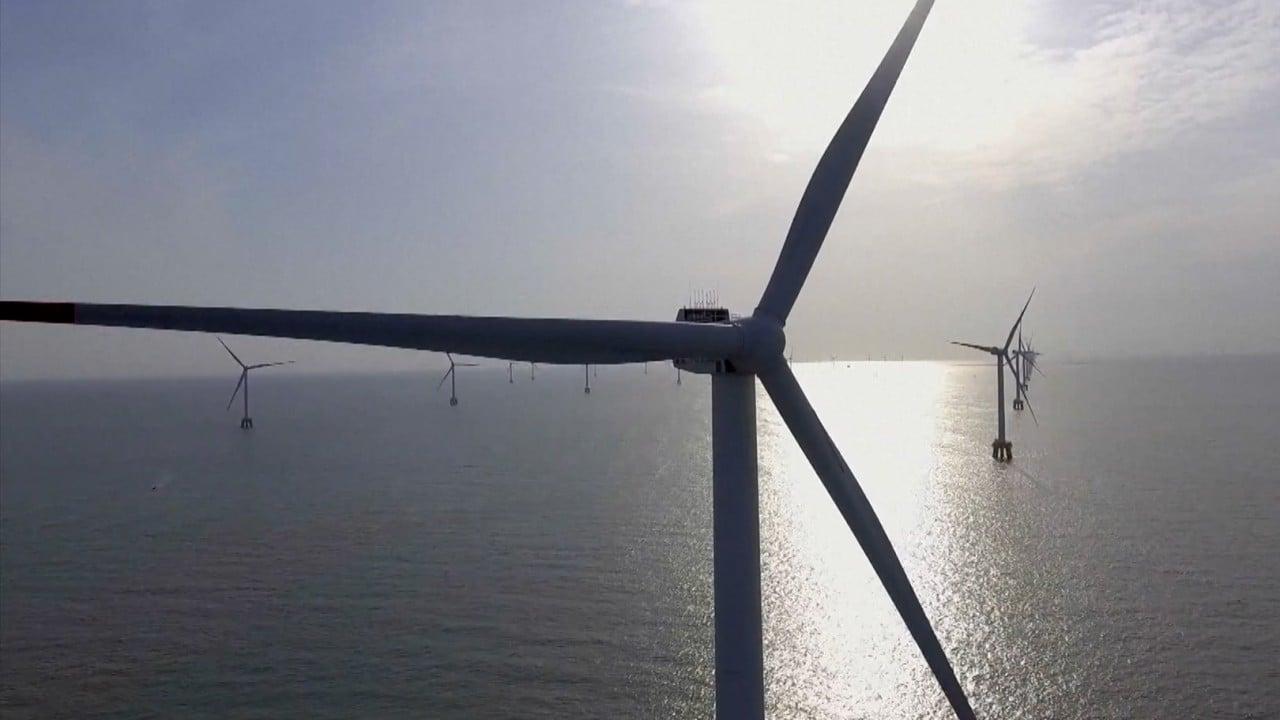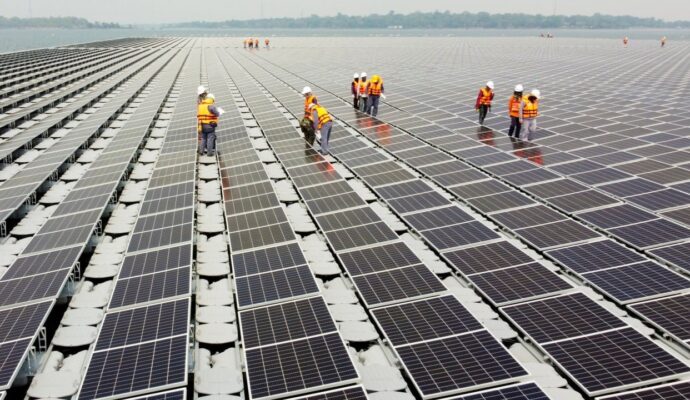
“There has been research on plasticity of ceramics around the world since I started my career 30 years ago. It can be said that today we have finally achieved a breakthrough on that topic,” Chen said.
The researchers used silicon nitride to make nanopillars containing two types of crystal structures. When subjected to external force, one type of crystal structure can transform into the other, allowing the material to bend then resume its original shape.
The researchers used silicon nitride to make nanopillars containing two types of crystal structures, shown here in green and orange. Photo: Chen Kexin
The material could be especially useful for building aerospace engines. Ceramic materials are strong and light and can tolerate high temperatures. Flexible ceramic engines could operate at much higher temperatures than traditional alloy engines and with much better fuel efficiency.
A ceramic engine would be much lighter than an alloy engine, allowing it to accelerate much more quickly. Reducing the engine weight relieves stress on other components.
The material could also be used in automobile engines. Because ceramic materials have higher heat resistance than alloys, a ceramic engine could have a smaller coolant tank. The higher combustion temperatures of a ceramic engine could result in better thrust and fewer pollutants.
Silicon nitride ceramics are lightweight, biocompatible and antibacterial, making them a potential alternative for use in joint replacements. Most artificial joints are made of metal and need to be replaced every 10 years, which is expensive and painful for patients.
“Artificial joints made with ceramics can last a lifetime after implantation,” Chen said.
He said the material could also be used to make bearings used in wind turbines – a key component that connects the generator to the fan blades. Each bearing must withstand several tonnes of pressure during operation, and its durability determines the service life of the entire system.
“Our flexible silicon nitride ceramics could be used to manufacture bearings with a longer lifetime, thereby reducing the average cost of wind power,” Chen said.
“It is possible to produce this flexible ceramic material on a large scale based on our experiments. There is an obvious price advantage in the field of high-end equipment.”
For example, producing the single-crystal turbine blades used in jet engines requires expensive rare earth materials, while the most expensive silicon nitride sells for about US$200 per kilogram, he said.
“We will keep improving this ceramic material on the basis of our current work. Once you open a door, there is a broad world behind,” Chen said.


